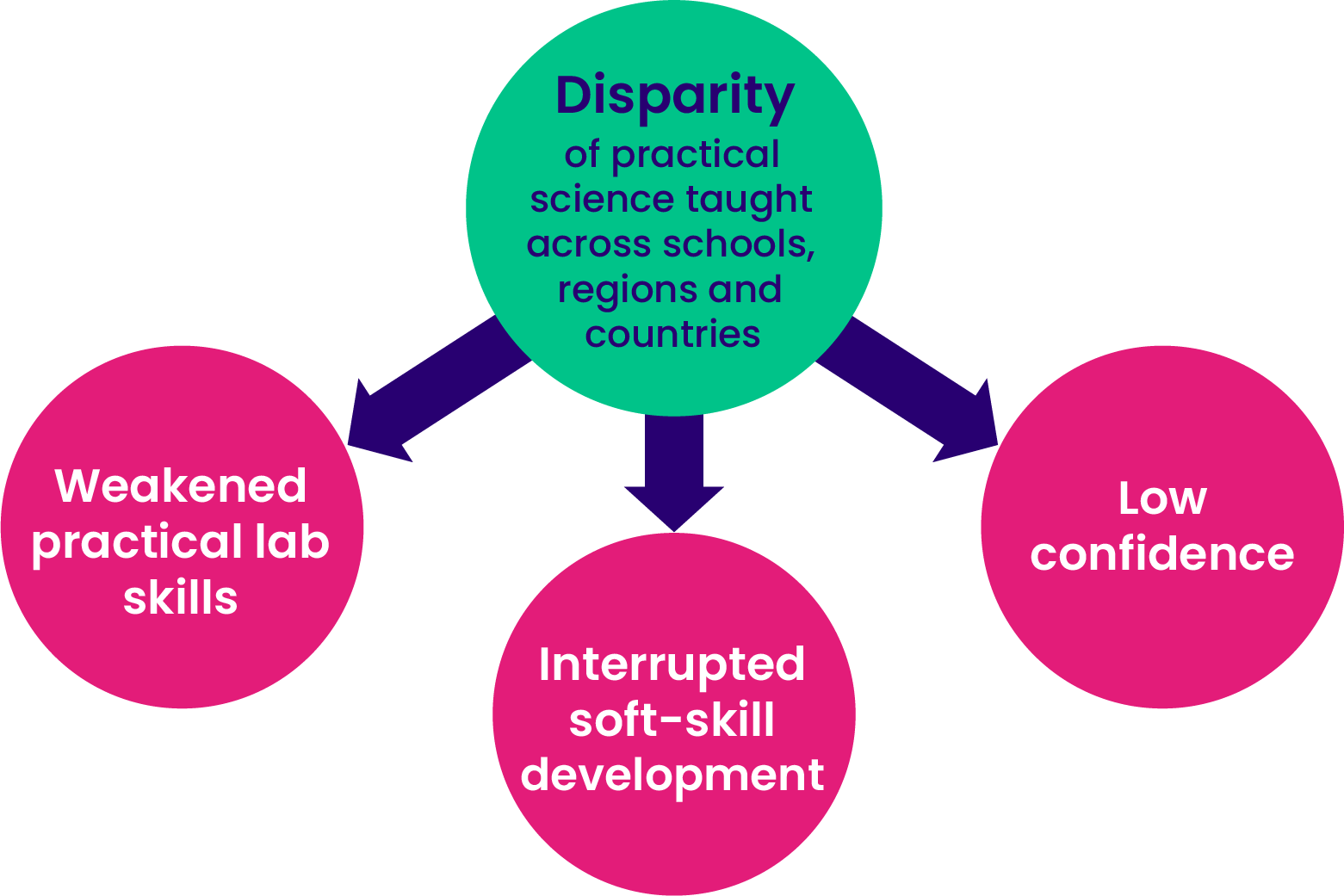Our Education Specialist, Ashleigh Steele, has been talking to teachers around the world about their experiences of practical science since the COVID-19 pandemic began. This article provides insights into the recent disparity of practical science in schools, the resulting Pandemic Lab Experience Gap and the challenges faced by first-year STEM university educators.
Like so many others, students in their post-16, pre-university education have had limited lab experience in the last 16 months due to restrictions on teaching. Students entering first-year STEM courses at university in the coming academic year may not have the same level of practical lab experience and skills as historically expected. This is known as the Pandemic Lab Experience Gap.

To help address this challenge, the teachers interviewed suggested first-year STEM university educators prioritise the following in the coming academic year.
- Build in basic lab skill development - make this an integral part of first-year labs.
- Take this opportunity to get all the students completing lab procedures in the way you want, that works at your institution.
- Lower your expectations of the students skills; try not to compare it to pre-covid times, and be patient.
- Build confidence by preparing the students as best as you can for the lab.
- Use team building activities to allow students to make connections with peers and lab partners.
- Take advantage of the disparity of skills and use group learning and peer-to-peer support in your teaching.
Depending on the school, region and country, different levels of practical science have been taught. Some students have had no practical science lessons during online, hybrid or in-school lessons. Restrictions on sharing and touching lab equipment and free movement around the classroom have drastically limited what teachers could offer upon returning to in-person teaching. Teacher demonstrations replaced key class practicals, but restrictions on where teachers and students could sit or stand in comparison to each other have also made this difficult. Juggling the logistical nightmare of teaching some students in person and some online, due to students self-isolating or shielding, has caused science departments to prioritise particular aspects of the curriculum, in some circumstances leaving the practical aspect behind completely.
In contrast, lab experiences of some students, particularly in countries with low COVID-19 infection rates, have only been limited during the tightest of lockdowns. Teachers have since been able to address gaps in lab skills and knowledge, resulting in similar pre-pandemic levels. Within schools and countries where the pandemic had a huge impact on practical science, three things had been most impacted across the board.

Teachers have noted a decrease in students’ tactile and manipulative motor skills using intricate lab equipment, along with a lack of habitual safety awareness. Basic lab skills such as accurately measuring volumes and masses have required review and prompting. The skill of experimental design has also suffered, along with error analysis, and evaluation skills.Soft skill development has also been hindered. Teachers have noted a decrease in student social and team working skills, especially when working with persons they are unfamiliar with. Digital technology has been relied upon so much for social interaction over the last 16 months, that communicating effectively in-person has become a challenge for some students.
Finally, the confidence of students has been drastically impacted. Confidence in using lab equipment has decreased due to lack of use and students are looking for reassurance by asking more questions to teachers and technicians. Nerves, anxiety and feelings of uncertainty are common around practical science and laboratories.
All these factors will ultimately result in a huge disparity of lab experience and skills across first-year university STEM course student cohorts. HE teaching staff are therefore faced with a vast challenge around student competence and confidence in the lab.
Find out how LearnSci LabSims and Smart Worksheets can be used in combination to support university teaching staff to face this challenge in our article, Combine LabSims and Smart Worksheets around STEM topic areas. If you would like access to the recent webinar, Addressing the Pandemic Lab Experience Gap, please contact us.


.png)